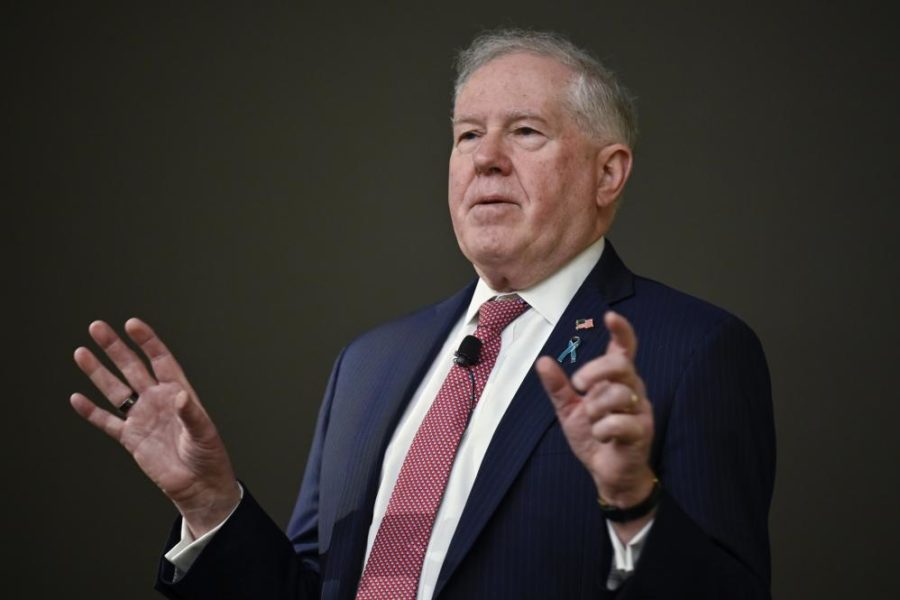The manned fighter aircraft that will form the centerpiece of the Air Force’s Next Generation Air Dominance program will cost hundreds of millions of dollars per plane, Air Force Secretary Frank Kendall told members of Congress on April 27—but the service can reduce costs in development and sustainment.
Speaking before the House Armed Services Committee on the fiscal 2023 budget request, Kendall specified that the main NGAD fighter would cost “multiple hundreds of millions of dollars … on an individual basis,” acknowledging that such a price tag “is a number that’s going to get your attention.”
By comparison, the F-22 cost roughly $135 million per tail, making it the most expensive fighter the U.S. Air Force has ever developed. The F-35A, meanwhile, costs around $80 million per jet, but that number could rise.
NGAD, according to Kendall’s estimate, will dwarf those costs, at least when it comes to price per plane. But the sixth-generation platform will fulfill a key air dominance role, Kendall noted.
“It’s going to be an expensive airplane; F-22 was an expensive airplane. It was one of my aircraft in one of my earlier positions, but it’s also an incredibly effective aircraft. It’s been dominant in the air for decades now. And we expect NGAD to be the same,” Kendall said.
With such a massive cost per plane, though, work will have to be done in other areas to keep the program’s overall cost down.
“That starts in development,” Kendall said, highlighting the need to design the system so that “you can do upgrades and do maintenance very efficiently.”
That need has been highlighted by the sustainment costs and issues for the F-35, which have become a massive cost for the program and will surpass $1.25 trillion across its service life. Kendall, however, sounded optimistic that NGAD could avoid a similar fate, using new practices such as modular design and common interfaces.
On top of that, the broader NGAD program will include aircraft that are “much less expensive, autonomous, uncrewed … employing a distributed, tailorable mix of sensors, weapons, and other mission equipment,” Kendall has said in the past. These unmanned teammates will be attritable, Kendall told Congress: not expendable, but cheap enough that they can be employed for more risky tasks.
Exactly how cheap these platforms will be remains to be seen—Kendall told lawmakers the Air Force does not yet have a “hard estimate” like it does for the manned fighter.
But considering the costs associated with the sixth-generation fighter, as well as the relatively substantial costs of the F-35 and the F-15EX, these unmanned teammates will have to be inexpensive to fulfill the Air Force’s usual “high-low” mix of fighters, Kendall said.
“We need a more affordable mix for the future,” Kendall said. “And the question is, how do we get there? And that’s one of the reasons I’m introducing the idea of uncrewed combat aircraft that are much less expensive and can be attritable, … not necessarily expendable—they’re not munitions—but they can be used at a higher rate and help populate our force structure.”
Such a system is still a ways down the road, however. In the meantime, Kendall said, the Air Force remains committed to Chief of Staff Gen. Charles Q. Brown Jr.’s vision of a “4+1” fighter fleet comprising the F-35, F-15EX, F-16, F-22 until NGAD is fielded, and the A-10.
Powering NGAD
In addition to the broader NGAD fighter, Kendall also shed some light on the program still in development that is likely to power the jet—the Advanced Engine Transition Program. Next-generation engines being developed as part of AETP are cutting edge, providing more range, greater acceleration, and increased cooling capability.
Those engines have proven intriguing enough that there has been interest in Congress in installing them on F-35s before the end of the decade, and the 2023 budget request from the Air Force devotes roughly $273 million to AETP. This led to questions from lawmakers concerned that the Air Force was creating a second F-35 engine program.
“It’s not a second F-35 engine. It’s a completely new and much-improved F-35 engine, potentially,” Kendall said. “It’s a technology that was in very early stages of development when I first saw it in 2010, that has matured fairly well. It offers the opportunity for, on the order of 20-25 percent cost savings or mission-range improvements. So it’s a substantial improvement and would be a replacement for the current engine, not a second one.”
However, like NGAD, the cost of AETP is likely to be high, Kendall hinted.
“There’s a [more than] $6 billion development cost associated with getting that engine completely developed and into production,” Kendall said. “So we’re looking at that. We’re funding the development this year, the next increment, but it’s going to have to compete in our budget for those resources going forward. But it would be a substantial improvement over the current capability.”
And like NGAD, observers shouldn’t expect AETP to be fielded in the immediate future.
“We’re a few years away from having a fully developed engine. There’s a substantial development program ahead of us,” Kendall said.

